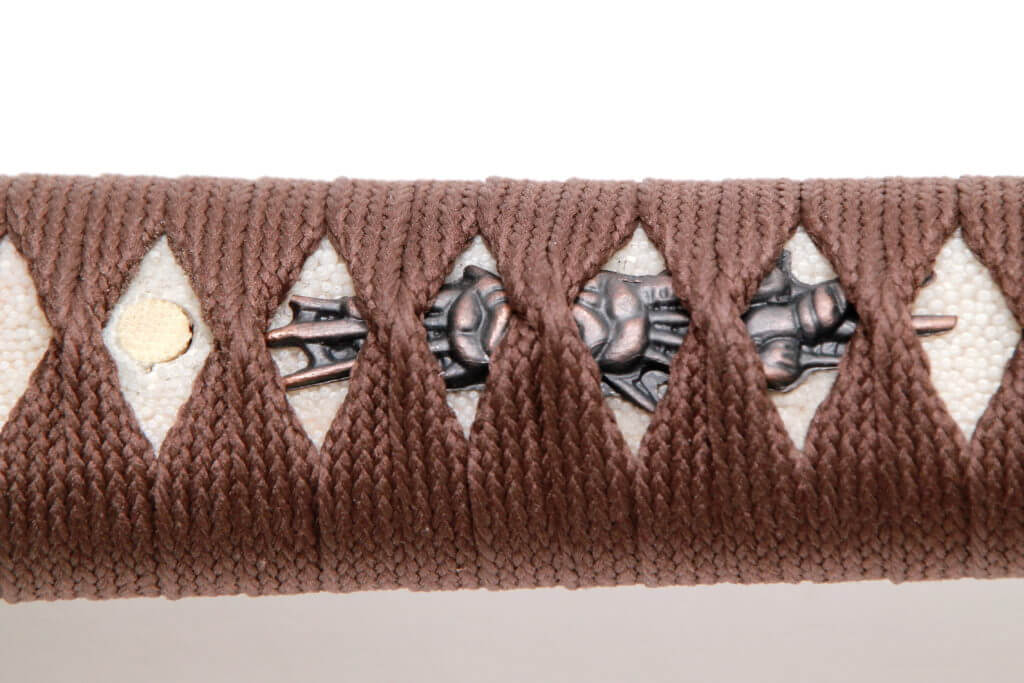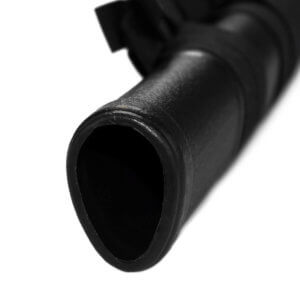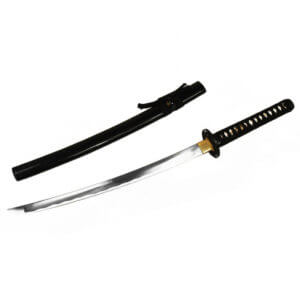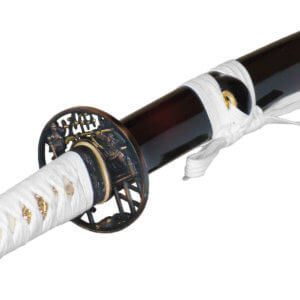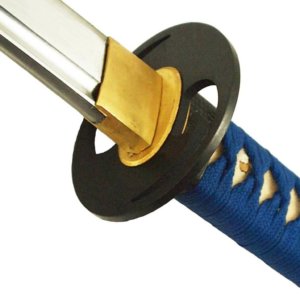Explanation of terms
Menuki are decorative elements on the sword hilt. These decorative elements are often elaborated down to the smallest detail and are an artistic masterpiece. The perfect details in a minimal space give these components their special aesthetic.
Origin of the Menuki
It is theorised that they developed from the head of the originally two-part Mekugi developed. The original design evolved into independent decorative elements, which are attached to the sword handle separately from the mekugi. In some cases, versions are still produced that have a pin on the back with a "negative" counterpart on the other side. However, the version separate from the mekugi has become the standard solution.
Position
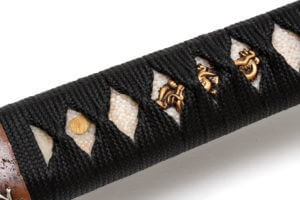
The position in which the decorative elements are attached to the handle varies. They are usually positioned under the handle binding and held in place by it.
Due to the positioning under the grip tape, protrusions form on the grip at the points of the tape under which the decorative elements are located. The elevation caused by the Menuki can interfere if they are positioned in the wrong place or support the grip in the right place.
This is why they are placed in different places depending on the need. This was probably one of the reasons why they were separated from the Mekugi.
Menuki from our shop
Design
There are always 2 menuki attached to a sword hilt. One on each side of the hilt. Originally, two similar motifs were chosen for this and there was a clear assignment to one side of the sword hilt. The motifs were made in "opposite" directions. So that, for example, a dragon always faces forwards on both sides of the sword hilt.
This concept was discarded for many inexpensive new sabres, as the production of uniform elements is considerably cheaper than the production of 2 different ones.
As a result, it is often the case with such swords that one dragon looks forwards and one backwards.

